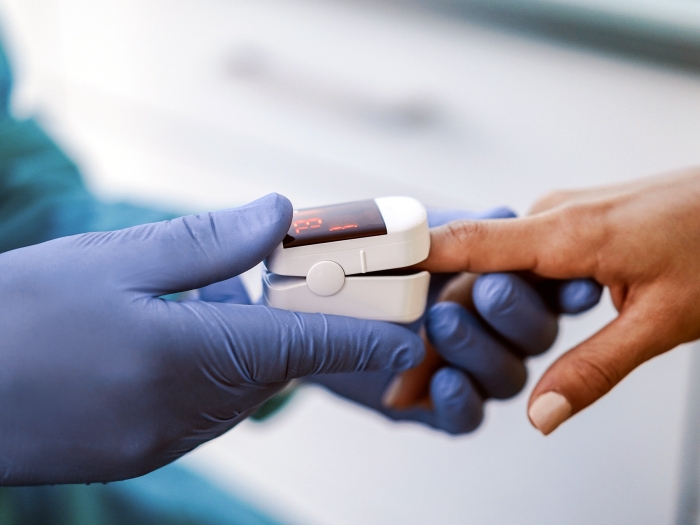A patient’s chances of readmission after gynecologic oncology surgery could be determined before she leaves the hospital. A U-M expert explains his methodology.
7:00 AM
Author |

When a woman undergoes a hysterectomy or oophorectomy for a gynecologic cancer, her likelihood of unplanned readmission hinges on a multitude of factors, both external and personal.
SEE ALSO: Surgery Surprise: Small, Rural Hospitals May Be Safer for Common Operations
Such revolving-door visits — ones that in many cases can be avoided — cost hospitals money and result in lower patient satisfaction. In some cases, too, they put patients at unnecessary risk that could jeopardize their recovery.
A recent study published in Gynecologic Oncology sought to find out why women who receive those surgeries return to the hospital before a typical follow-up visit.
"When most people go back to the hospital or their physician (for a scheduled exam after surgery), it's usually after two weeks," says lead author Shitanshu Uppal, MBBS, an assistant professor of obstetrics and gynecology at the University of Michigan.
Given that timetable and the potential of early trouble, that's often too late, he says.
Using data of 12,804 patients from the American College of Surgeons' National Surgical Quality Improvement database, Uppal and his colleagues gleaned the following:
-
Infections after a hysterectomy or oophorectomy were responsible for 45 percent of readmissions, with surgical site infections comprising nearly one-third of that total.
-
Three-quarters of readmissions took place within two weeks of discharge from the hospital.
-
Women who experienced complications prior to discharge had twice the risk of readmission.
-
Higher rates of unplanned readmission were seen in patients of African-American descent; those who returned somewhere other than home; had an open surgery instead of laparoscopic; or whose operation exceeded three hours.
Across the study's cohort, all of whom had gynecologic malignancies, the overall readmission rate was 6.5 percent — a single-digit number that Uppal says doesn't signal a sea change over prior years.
But it does, he says, prompt a need to probe and lessen the problem.
The idea is to identify the person who is at the highest risk and design some prospective interventions that will reduce the number of readmissions.Shitanshu Uppal, MBBS
Preventive measures
Because of a high percentage of readmissions tied to infection, the impetus lies on hospitals to work harder to avoid conditions that could lead to one.
Among the ways to do that: "Good surgical technique, making sure patients are not lingering in the hospital for longer than necessary, proper hand hygiene," Uppal says. "What we need to do is focus on our infection reduction — and the readmission rates will automatically go down."
Because no clear guidelines to reduce readmission rates exist, doctors might also take greater steps to customize an extended care plan for each patient to better ensure her well-being during recuperation.
Which is why Uppal and the report's other authors developed a nomogram scale to gauge one's risk for readmission after a hysterectomy or oophorectomy.
"The idea is to identify the person who is at the highest risk and design some prospective interventions that will reduce the number of readmissions," Uppal says.
Key factors include a patient's age and race as well as the location of her malignancy; complexity and length of the operation; and the presence of comorbidities.
A certain score — in this case, a 15 or higher on a 46-point scale — could incite a pre-emptive response before problems arise.
Under that scenario, "something should happen in the first seven days," says Uppal, whose report doesn't detail specific treatment recommendations. "Maybe it should be a nurse calling a patient or making a house call. Perhaps they should not even be going home, or maybe to a nursing facility."
Wider implications
The focus to safely curb readmissions after surgeries of all types continues as clinicians take growing note of penalization tied to such rates (as dictated by the Affordable Care Act, hospitals are docked a percentage of Medicare reimbursement funds when patients treated for certain conditions return within 30 days).
SEE ALSO: Is Pediatric Surgery Quality a Numbers Game?
Hysterectomy and oophorectomy are not among the monitored procedures.
"All of a sudden, because of the penalties, everyone's paying attention to readmissions," Uppal says, noting that his nomogram scale ultimately could be tailored to other surgeries. "They're scrambling to figure out if there is a simple way to reduce them. If this nomogram is validated and helps curb readmission rates, it's worth developing a similar scale for other surgical procedures."
Still, even if sterility and follow-up care are sufficient, a hospital's worth shouldn't be determined by its readmission rates only, says Uppal.
High-volume hospitals, he notes, typically see people with more aggressive cancers — thus increasing the chances those patients will be back. And they could treat more disadvantaged or at-risk folks with a lifetime of preventable health issues that hinder their ability to heal.
More problematic, Uppal says, the growing stigma (and penalties) tied to readmission could ultimately snub the populations that health care is designed to help.
Hypothetically, "If you referred a patient to me with a lot of cancer — but at the same time the hospital is hovering over me watching my readmission rate — I might find reasons not to operate on that person," says Uppal. "By looking at readmission as a metric of quality, we might be creating a disparity in cancer care."

Explore a variety of health care news & stories by visiting the Health Lab home page for more articles.

Department of Communication at Michigan Medicine
Want top health & research news weekly? Sign up for Health Lab’s newsletters today!





